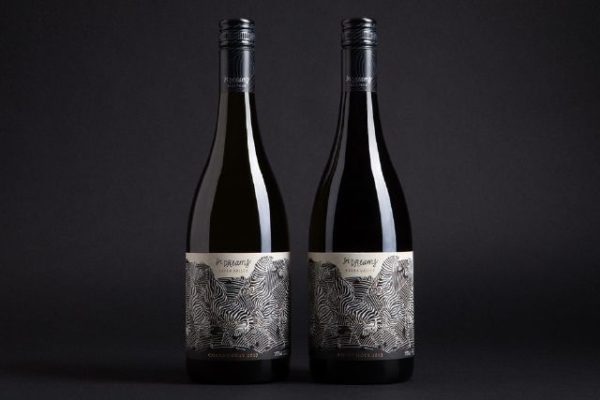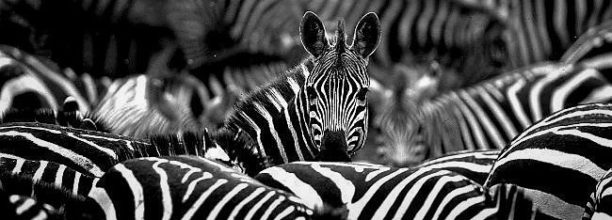“Insight such as this falls to one’s lot but once in a lifetime.”
-Sigmund Freud, (Die Traumdeutung)
In ancient Chinese history there are writings of two types of dreaming, one where the soul leaves the body during sleep to go on a journey, whilst the other form of dreaming sees the soul remain in the body. In the ancient Indian text the ‘Upanishads’, it notes there are two meanings that dreams may have: one is merely the expression of inner desires, whilst the other is the soul leaving the body to be guided until awakened. For Hindus, dreaming is one of the three states the soul experiences in its lifetime, the other two being the awakened soul and the sleeping soul.
The Ancient Greeks had their god of dreams, Morpheus who could send warnings and prophecies to those who slept at shrines and temples and who could visit the minds of mortals in their sleep.
Sigmund Freud, (1856 – 1939) is regarded as the founder of psychoanalysis, on the night of July 23rd, 1895 he went to bed and had a dream about a patient he had been treating, the dream would become known as ‘Irma’s Injection’. This dream would propel Freud on to write one of his most famous works, ‘Die Traumdeutung‘ , The Interpretation of Dreams, published in 1899.
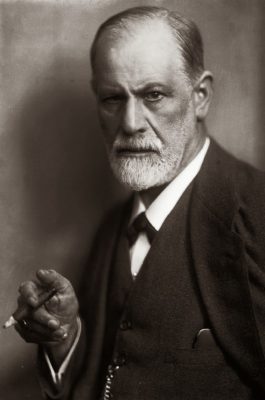
In the book Freud proposes his theory of the unconscious mind and dream interpretation, introducing the term wish fulfillment, which he describes as the satisfaction of a desire through an involuntary thought process such as dreams or daydreams. He proposed that this form of satisfaction was often indirect and in need of interpretation to be recognized.
For Freud, dreams were often attempts by the unconscious mind to resolve some repressed conflict or some suppressed, forbidden desire. He called dreams the “royal road to the unconscious”, and felt that by studying and interpreting our dreams it would allow us accessibility to parts of the mind that are inaccessible through conscious thought.
“Dreams are impartial, spontaneous products of the unconscious psyche, outside the control of the will. They are pure nature; they show us the unvarnished, natural truth, and are therefore fitted, as nothing else is, to give us back an attitude that accords with our basic human nature when our consciousness has strayed too far from its foundations and run into an impasse.”
–Carl Jung, (Civilization in Transition – The Collected Works of C. G. Jung, Volume 10
Carl Gustav Jung, (1875 – 1961) was a Swiss psychiatrist and psychoanalyst who founded analytical psychology. It has been noted that there are many popular modern applications of Jung’s research including: the Myers-Briggs Personality Type Indicator, the polygraph (lie detector) test, and 12-step addiction recovery programs.
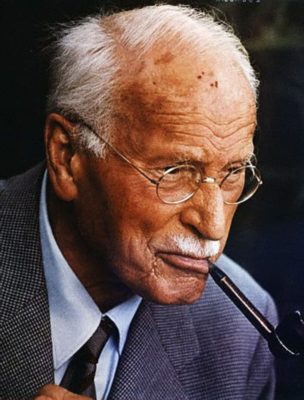
Marcus West in his excellent paper, ‘Jung and Dreams’ for the Society of Analytical Psychology wrote that Jung believed dreams were the psyche’s way of attempting to communicate important things to us and an important part of the development of our personality. He saw dreams as open in the way they communicated to us but noted they were sometimes difficult to understand because they often used symbols to convey their message.
Freud believed dreams were meant to be secretive, that they were a product of suppressed, forbidden desires whereas Jung saw dreams as open and honest communication by the subconscious to the conscious mind; with the aim of integration between our conscious and unconscious self, he called this process ‘individuation’
The word archetype, literally means ‘original pattern from which copies are made’, it is believed to have first entered into English language in the 1540s and is derived from the Latin archetypum, which itself is from the Greek ‘archetupos’, which means ‘first-moulded’. The origins of the archetypal hypothesis date back as far as Plato. Plato’s ideas were pure mental forms that were imprinted in the soul before it was born into the world.
Jung, believed that universal, mythic characters—archetypes—reside within our collective unconscious. Archetypes represent fundamental human motifs of our experience as we evolved and have traits that can be traced all the way back to our original ancestors, our ‘Mitochondrial Eve’ if you will and they therefore evoke the deepest of emotions in us.
Jung defined many archetypes including the ‘Shadow’ a dark and somewhat disconnected part of our psyche, the ‘Anima and Animus’ which is the male and female, the ‘Self’ which was not only our conscious and unconscious selves but also that part of our ‘spirit’ that was connected to all mankind and the entire universe. He also notes twelve archetypes that symbolize our basic motivations, with each ‘type’ having its own set of values, meanings and traits. He broke the twelve types into three sets of four, suggesting the each group was driven or motivated by its source, the ‘Ego’, the ‘Soul’ or the ‘Self’.
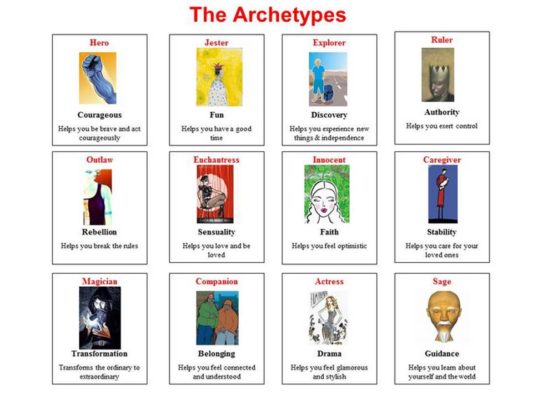
The motivating Archetypes and their subgroups:
The Ego
The Innocent – Who wants to do right and enjoy happiness
The Orphan – Who want to connect and feel like they belong
The Hero – Who wants to prove one’s worth and create a better world
The Caregiver –Who wants to protect and help others
The Soul
The Explorer – Who wants freedom and wants to experience a better more fulfilling life
The Rebel –Who wants revolution and wants to disrupt what isn’t working
The Lover –Who wants intimacy, deep relationships and emotional connection
The Creator –Who wants to create things that are valued and realize a vision
The Self
The Jester –Who wants to live in the moment, enjoy love and make people laugh
The Sage –Who wants to find truth and to understand
The Magician –Who wants to make dreams come true and understand the laws of the universe
The Ruler –Who wants to control and prosper
Jungian Archetypes are autonomous and hidden forms, highly developed forms of our individual and collective unconscious and it is only when they come into contact with consciousness that they are represented as images and motifs that they take on specific, symbolic forms.
Jung observed in his research that virtually everyone was driven by more than one archetype but, that one type tended to be the dominant force. For Jung, it was helpful to know which archetypes were driving people’s behaviour and which one was the dominant archetype, in order to gain insight and understand the causes of their behaviour, decision making, thought processes and motivation.
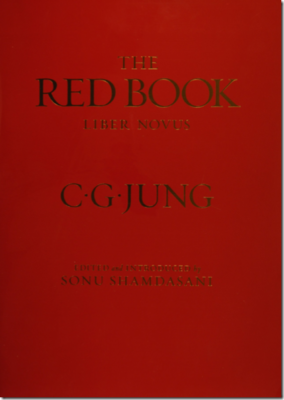
The Red Book
In 1913, at the time of his final split with Sigmund Freud and his theories, (and therefore almost everyone in his profession) Carl Gustav Jung experienced more than a crisis of confidence; it became what he termed a ‘confrontation with the unconscious’.
Sarah Corbett in her excellent article for the New York Times Magazine notes that he worried at times that he was ‘menaced by a psychosis’ or was ‘doing a schizophrenia’. He was almost certainly having a complete nervous breakdown and so determined that this was invaluable experience and decided he would write down everything he experienced, thought, saw and felt during his decent into madness.
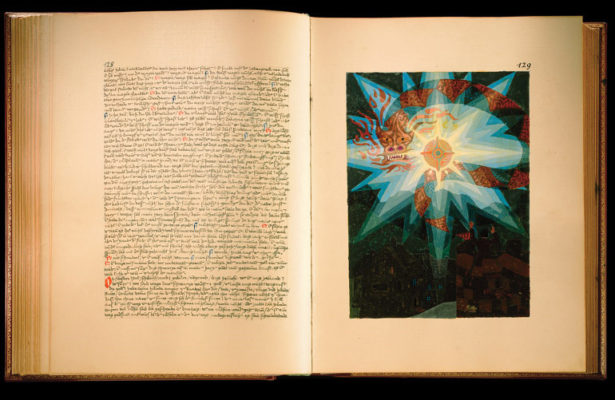
Whilst he was holed up in his studio he induced hallucinations and decided to purposefully lose his mind, his soul. Jung experienced, analyized and recorded every detail then had it bound in red leather and inscribed it with the words ‘Liber Novus’, (Latin for New Book). He would spend the next sixteen years editing, rewriting and crafting the work, which would remain locked in a vault in a Swiss bank for almost 100 years.
Jung himself claimed that all the seeds for his major ideas are represented in the Red Book and until 2008 fewer than two dozen people had ever seen it. Jung’s relatives resisted publishing the book until 2009, the book is now in its seventh print run in just eight years.
Jung worked on the Red Book using calligraphic pen, multicoloured ink, and gouache paint. The text is written in German but includes quotations from the Vulgate in Latin, several inscriptions and names are written in Latin and Greek, and there is a brief marginal quotation from the Bhagavad Gita given in English.
“The years… when I pursued the inner images, were the most important time of my life. Everything else is to be derived from this. It began at that time, and the later details hardly matter anymore. My entire life consisted in elaborating what had burst forth from the unconscious and flooded me like an enigmatic stream and threatened to break me. That was the stuff and material for more than only one life. Everything later was merely the outer classification, scientific elaboration, and the integration into life. But the numinous beginning, which contained everything, was then.”
-Carl Gustav Jung – The Red Book
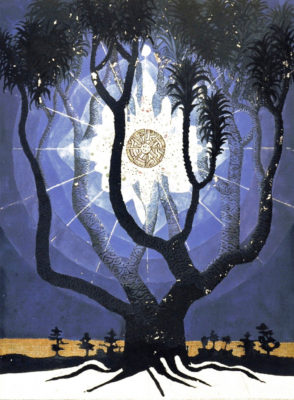
Jung emerged from his period of isolation with the publication of several journal articles, followed in 1921 by the publication of ‘Psychological Types’, one of his most influential books. Then followed a decade of active publication and overseas travels.
The Dreaming
“Those who lose dreaming are lost.”
-Australian Aboriginal Proverb
In the animist traditions of Australian Aboriginal mythology, The Dreaming is a sacred era in which ancestral spirit beings formed creation. Dreaming for Australian Aboriginal people represents a time when the Ancestral Spirits progressed over the land and created life and important physical geographic formations and sites. Aboriginal philosophy is known as the ‘Dreaming’ and is based on the inter-relation of all people and all things.
The Dreaming explains the origin of the universe and workings of nature and humanity. It shapes and structures life through the regulation and understanding of family life, the relations between the sexes and obligations to people, land and spirits.
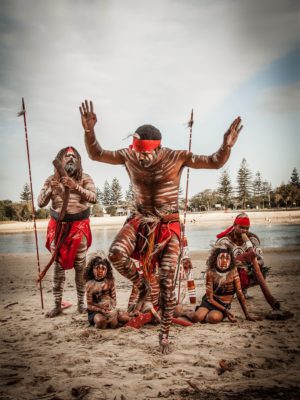
Australian Aborigines have the longest continuous cultural history of any group of people on Earth and the English language can never truly capture what ‘Dreaming’ is all about. ‘Dreaming’ has never been a direct translation of any Aboriginal word. The English language does not know an equivalent to express the complex Aboriginal spiritual concepts.
Each Aboriginal person identifies with a specific Dreaming. It gives them identity, dictates how they express their spirituality and tells them which other Aboriginal people are related to them in a close family, because those share the same Dreaming.
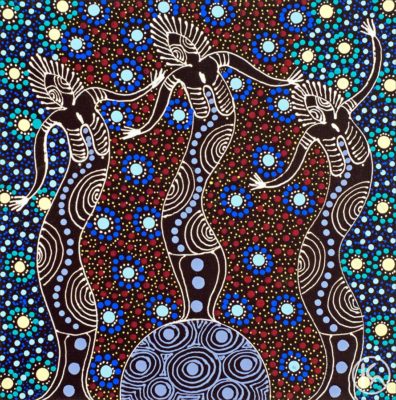
None of the hundreds of Aboriginal languages contain a word for time. When we try to explain in English their philosophy we are perhaps best not to use the term ‘Dreamtime’ but use the word ‘Dreaming’ instead. It better conveys the timeless concept of moving from ‘dream’ to reality which in itself is an act of creation and the basis of many Aboriginal creation myths. Aboriginal spirituality does not think about the ‘Dreaming’ as a time past, in fact not as a time at all. Time refers to past, present and future but the ‘Dreaming’ is none of these. The ‘Dreaming’ “is there with them, it is not a long way away. The Dreaming is the environment that the Aboriginals lived in, and it still do today. It is important to note that the Dreaming always emphasizes the significance of place.
In most stories of the Dreaming, the Ancestor Spirits came to the earth in human form and as they moved through the land, they created the animals, plants, rocks, rivers, mountains and other forms of the land that we know today. These Ancestral Spirits also formed the relationships between Aboriginal people, the land and all living beings.
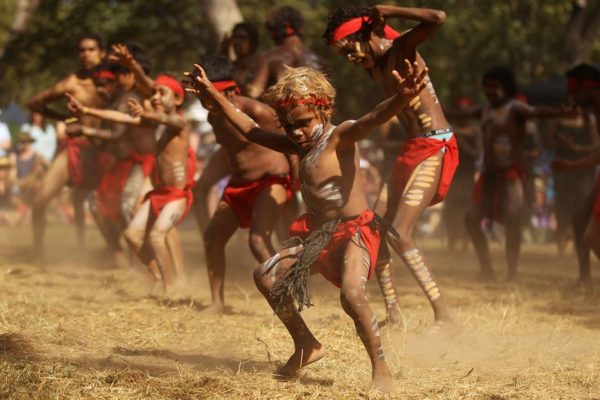
Once the ancestor spirits created the world, they did not merely leave but transformed into trees, the stars, rocks, watering holes etc. These are the sacred places of Aboriginal culture and have special meaning. Because the ancestors did not disappear at the end of the Dreaming, but remained in these sacred sites, the Dreaming is never-ending, linking the past, the present, the people and the land.
Aboriginal people believe that every person essentially exists eternally in the Dreaming. This eternal part existed before the life of the individual begins, and continues to exist when the life of the individual ends. Upon birth, the child is considered to be a special custodian of that part of his country and is taught the stories and song lines of that place. It was believed that, before humans, animals, and plants came into being, their ‘souls’ existed; they knew they would become physical, but not when. And when that time came, all but one of the ‘souls’ became plants or animals, with the last one becoming human and acting as a custodian or guardian to the natural world around them.
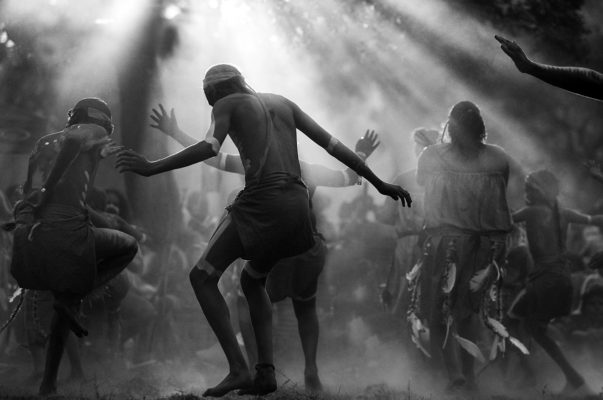
The Dreaming establishes the structures of society, rules for social behavior, and the ceremonies performed to ensure continuity of life and land. The Dreaming governs the laws of community, cultural lore and how people are required to behave in their communities. The condition that is The Dreaming is met when people live according to law, and live the lore: perpetuating initiations and Dreaming transmissions or lineages, singing the songs, dancing the dances, telling the stories, painting the song lines and Dreamings.
In the Aboriginal world view, every event leaves a record in the land. Everything in the natural world is a result of the actions of the archetypal beings, whose actions created the world. Whilst Europeans consider these cultural ancestors to be mythical, many Aboriginal people believe in their literal existence. The meaning and significance of particular places and creatures is wedded to their origin in the Dreaming, and certain places have a particular potency, which the Aborigines call its dreaming.
In this dreaming resides the sacredness of the earth.
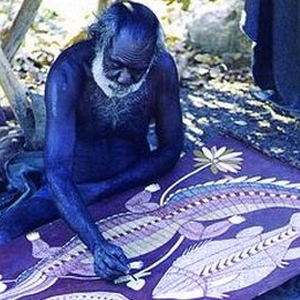
The Mechanics of a Dream
Brain scans have revealed that we have our most vivid dreams during REM sleep phases. REM or Rapid Eye Movement Sleep occurs in cycles of about 90 to 120 minutes throughout the night and accounts for up to 25% of total sleep in adults, although the proportion decreases with age. REM sleep dominates the latter half of the sleep period, the hours before waking and the REM component of each sleep cycle typically increases as the night goes on.
Dreams also occur in NREM Sleep stages however, they are significantly different in quality and quantity.
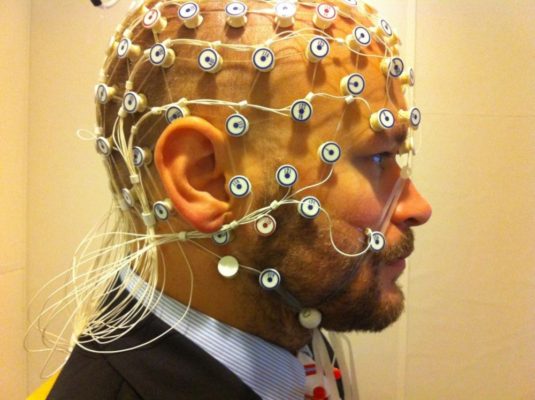
During these REM periods of sleep there is a lot of brain activity going on with a lot of that activity coming from the limbic system and the amygdala, parts of our brain that store memories and regulate our emotions. Researchers have theorized that during REM sleep the brain is going through a process known as ‘synaptic efficacy refreshment. This has been observed as brain waves ‘self firing’ during sleep and it is believed to serve the purpose of consolidating and reinforcing old memories, suggesting that dreaming is a byproduct of that process.
Authentic dreams reflect actual memories or experiences that the dreamer can relate to and are believed to be the side effect of the synaptic efficacy refreshment. Research suggests that the brain stimulation that occurs during dreaming authentic dreams is reinforcing neurological pathways as a method for the mind to “rehearse” certain things during sleep.
Whereas illusory dreams contain impossible, incongruent, or bizarre content and are hypothesized to stem from memory circuits accumulating efficacy errors. In theory, old memories having undergone synaptic efficacy refreshment multiple times throughout one’s lifetime result in accumulating errors that manifest as illusory dreams when stimulated. Qualities of illusory dreaming have been linked to delusions observed in mental disorders. Illusory dreams are believed to most likely stem from older memories that experience this accumulation of errors in contrast to authentic dreams that stem from more recent experiences.
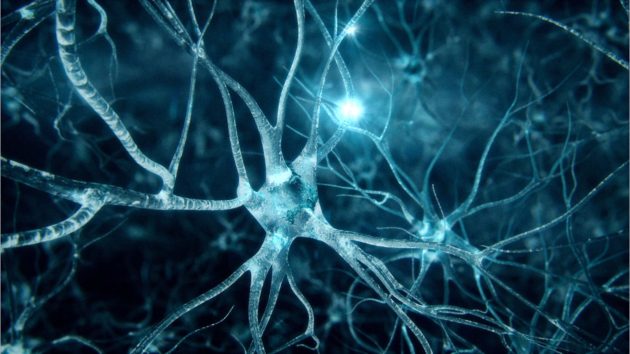
Whilst there is much debate on the purpose of dreaming, one of the main theories is that it involves the consolidation of memories and experiences and that the electric, involuntary stimulus of the brain during sleep forms the basis for most of our dreaming.
The link between memory, sleep and dreams is significant, Research has shown that NREM Sleep is responsible for the consolidation of facts and episodes whist those consolidated during REM Sleep are related to more emotional aspects of memory. This correlation between REM and emotional consolidation has been presented as one of the main reasons why dreams are of such an emotional nature and produce such strong reactions.
One curious aspect of dreaming is the ability to externally influence the contents of dreams with various stimuli which has shown the brains ability to process information even whilst asleep. One such successful connection was made to the olfactory, influencing the emotions of dreams through a smell stimulus. Their research has shown that the introduction of a positive smelling stimulus induced positive dreams while negative smelling stimulus induced negative dreams.
“All men dream, but not equally. Those who dream by night in the dusty recesses of their minds, wake in the day to find that it was vanity: but the dreamers of the day are dangerous men, for they may act on their dreams with open eyes, to make them possible.”
– T. E. Lawrence
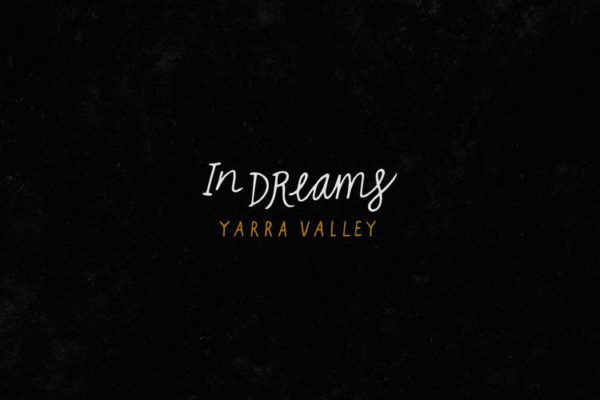
Bottled Dreams
In Dreams winemaker, Nina Stocker comes from outstanding vineyard pedigree, growing up in the village of Flueh, near the Swiss city of Basel, on the border with French Alsace, Nina’s parents helped tend to neighbouring vineyards and would often visit European wine regions for their holidays. Nina herself would wander the vineyards as a small child collecting flowers just to smell their perfume.
The family moved to Australia when Nina was just seven years old and in 1988 her immunologist father, Dr. John Stocker established a ‘weekend’ vineyard near Tallarook in rural central Victoria and became chairman of the Grape Wine Research and Development Corporation.
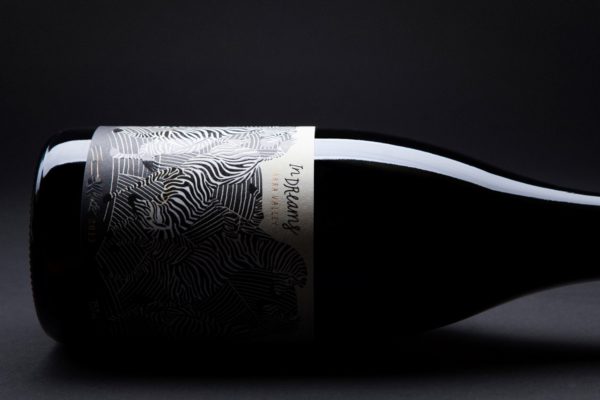
Nina completed a bachelor of science in microbiology and immunology as well as a bachelor of arts majoring in history at Monash University and then a postgraduate diploma in oenology at the University of Adelaide.
She has worked vintages in McLaren Vale (Australia), Barolo in Piedmonte (Italy) and at Fattoria Zerbina in Romagna (also in Italy), the Rhone Valley (France), Alentejo (Portugal), Marlborough (New Zealand) and the Sonoma Coast, California (United States). As senior winemaker for ‘In Dreams’ in the Yarra Valley, Victoria, Australia, Nina’s experiences and background have seen her develop into one of the most talented and exceptional young winemaker’s in Australia today.
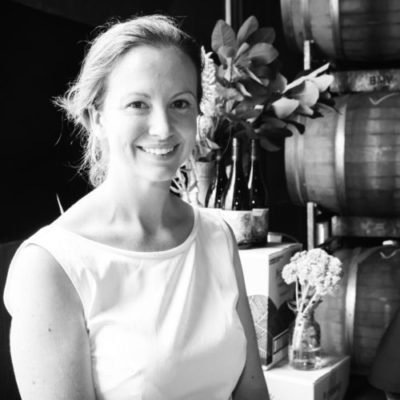
The In Dreams Chardonnay is different, from its aromas of lemon meringue, cashew nut, nougat, white peach and honey dew melon there is richness and there is tartness, a perfume in harmony which comes through on the palate where the rich, creamy entry gives way to minerals and smoky oak. This is a wine of rare and impeccable balance between the ripe, complex fruit, the acidity and the subtle use of oak. On the palate the creamy entry offers up white peach fruit flavours, complemented by touches of fig, nuttiness, honey, citrus and toasty oak before giving way to fine, zesty minerals, the white peach notes lingering on the palate.
Match with salmon, chicken, pigeon and other small game birds or ham steak and pineapple and unleash some bottled dreaming.
